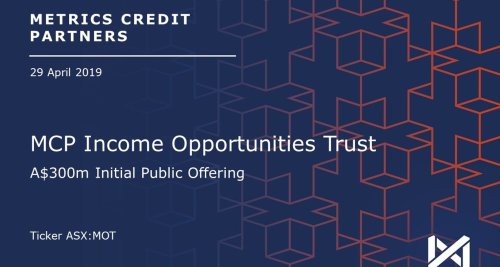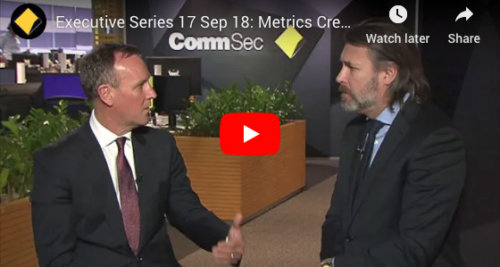The big alternative questions

As investors continue to increase their asset allocation to private markets and other alternatives at the expense of traditional assets, they need a better understanding of what alternative investing is really about and what the key characteristics of this asset class are, fund managers say.
Over the last two decades global asset allocations to private markets jumped from 6% to 23% which marked the beginning of investors’ departure from traditional assets, like equities and bonds, according to research by the Thinking Ahead Institute which looked at the global institutional pension fund assets across the 22 largest major markets.
At the same time, analysis of the seven largest markets for pension assets which included Australia, Canada, Japan, the Netherlands, Switzerland, the UK and the US, proved equity allocations across these markets dropped from 61% to 45% over the past 20 years.
According to Regal Funds Management, which runs three out of five top-performing funds in the ACS Alternative sector, including the Regal Australian Small Companies and the Regal Australian Long Short Equity which returned 33.07% and 18.13% for the three-year period ended in January, respectively, according to FE Analytics, there is a broad range of products and strategies operating in the alternative space and therefore investors have to understand what their selected alternative investment strategy represents.
“The real benefit of alternatives, the value of having alternatives in your portfolio, is principally to generate absolute returns, typically uncorrelated to the remainder of the portfolio, that is providing diversification benefits and improving the risk return outcome for investors,” Regal’s chief executive, Brendan O’Connor, said.
However, alternative strategies tend to generate such returns through manager’s skill rather than trying to ride the rising market, he explained.
According to Steve Shepherd, managing director and head of APAC at Capital Fund Management (CFM), these strategies would also benefit any investors looking to diversify their portfolio as they can help smooth out the path for returns.
“Smoothing out means that sometimes you mitigate some of the downside risks. It’s not because alternatives never go down because like every other investment strategy, alternatives have good years and bad years. They just go up and down at different times from traditional assets portfolio,” he said.
ADDING ALTERNATIVES TO A PORTFOLIO
When asked about how advisers could make the best use of alternative investment strategies and incorporate them into their clients’ portfolio, Andrew Lockhart, managing partner at Metrics, admitted that it was a difficult question as there was no ‘one size fits all’ solution.
“It’s more about understanding what the client wants, how to access that market and what differentiates private markets to other markets,” he said.
“Investors need to understand what the manager is doing, what risk is that manager taking, how is the transaction being structured and what is the appropriate vehicle to control these activities.”
Sarah Shaw, global portfolio manager and chief investment officer at 4D Infrastructure, said advisers also need to consider carefully their clients’ objectives, risk appetite and defensiveness before allocating a portion of their portfolio to the alternative asset class such as infrastructure.
“I think infrastructure has a plus in every portfolio and if I look at my own portfolio it’s quite a substantial spot. But I would say that at least 5-10% in infrastructure is a really good place to start – it gives you equity exposure, but with a lower correlation to general equities, it gives you yield , it gives you global exposure and it’s directly correlated to the domestic demand,” Shaw said.
MISCONCEPTIONS
So, what are the most common misconceptions around alternative investments?
According to O’Connor, one of the most problematic issues for investors when it comes to alternative investing was understanding of dispersion, which means the difference between the best-performing alternative investment manager and the worst-performing manager, which was far greater in alternatives than in other asset classes.
“If you are looking for long only equity manager or long only fixed income manager the difference between the top of the class and the bottom of the class is relatively small as a generalisation,” O’Connor said.
“Within alternatives, the difference between the best performing and the worst is quite large. So, the first thing that investors who are looking to allocate to alternatives need to do is actually to do their homework on the manager.”
This means investors need to know whether their selected manager is able to demonstrate a track record of generating returns independent of market movements, how long a given company has been around and the degree to which it was recognised by peers or industry for the returns they have generated, he said.
According to Shaw, another big misconception when it comes to infrastructure as a part of the alternative asset class was that many still perceive it as a ‘just a defensive asset class’.
“[Infrastructure] has a beautiful combination of defensive characteristics with huge growth potential and then you’ve got this macro diversity within subsectors that it’s not just a defensive asset class,” she said.
“There’s a global need for infrastructure. Then there are things like population growth and the West is getting old and the East is getting younger, we’ve got an emergence of the middle class in the developing economies, we’ve got sustainable investments – these are all thematics we think about– they are not short term but they are definitely thematics that investors can gain traction to via infrastructure investments.”
What is more, investors often perceived alternative strategies as being very complex and wrongly assumed they could time them properly.
“I think it is probably one of the biggest impediments beyond the fee question to advisers and other investors who may be concerned about alternatives,” Shepherd noted.
“So understanding what alternative truly means and typically it means that they diversify your portfolio and that they go up and down in different time – than traditional markets.
“The second one is really noted as an assumption that we can time the markets, so time the alternative strategies. Although people try to do it a lot, very few people have shown any level of real success in timing them.”
WHERE IS THE MONEY GOING?
“I think that there is a lot of money going into private credit, and a lot of money going into private equity,” O’Connor said.
“I’m not sure if all this money is chasing returns in those sectors while necessarily understanding the risks that they are taking. Some of the risks can be in private credit – the huge growth in corporate credit that has been issued post the last financial crisis – there are some great charts that show the great increase in triple B debt post the financial crisis issued by corporates. That could a warning sign for some.”
O’Connor said that, at the same time, a lot of money has been flowing into strategies such as alternative investment strategies which offer exposure to a broader range of beta and that, over the last five years, there has been a lot of money going into infrastructure, private debt and private equity.
Another category that has generated good returns for investors but hasn’t seen the same flows is what they call liquid alternatives.
“A lot of it is going into private asset markets, so alternatives that are private markets, and one of the largest sources of capital that is being deployed is in in private credits markets – so direct lending strategies and private credit – that’s what we do,” Lockhart said.
According to Shepherd, the attractiveness of various subsectors of alternatives looked differently across geographies.
“I think it depends a little bit on where you are in the world, certainly here in Australia there’s a different dynamic than we are seeing in countries like Canada or in the US or Europe.
“One is the broad category of alternative strategy and then I think this whole idea of alternative beta and or sometimes called the alternative risk premia – it seems to get a bit of a traction here.”
WHY IS THE ALTERNATIVE SECTOR GROWING NOW?
O’Connor said there might be a few reasons behind why investors are looking to diversify their portfolios now whereas they might have been reluctant in the past.
“One is the search for investment returns, not just yield but capital growth as well, I think the performance of equity markets – over the last 10 years would have been more of a bull market in many respects, people perhaps were of the view that it is going to be hard to generate those sort of the same returns of the next 10 years,” he explained.
“Point two is that interest rates have been coming on down dramatically and we think that the interest rates are going to stay lower for longer, for quite a while.
“So with equity markets looking expensive, with fixed income returns coming down and likely to stay down for a while, investors are increasing the exploring other investment strategies, alternative investment strategies to generate growth and even yield in their portfolios.”
According to Shepherd, those investors who have been invested in traditional assets for a long time have “done very very well” but this may be coming to an end.
“It was probably one of the longest, if not the longest, bull markets in stocks historically. However, I think everybody has a sense that at some point the party ends.”
Money Management – 21 February 2020
Other News
Research Paper: Six Trends for Private Credit in 2026
Metrics Credit Partners has released its latest research paper, Six Trends for Private Credit in 2026, exploring the opportunities and challenges…
Metrics Innovate Reconciliation Action Plan
We are proud to share our second Reconciliation Action Plan (RAP), reaffirming our commitment to truth, healing and unity. We…
INSIGHTS
MCP Income Opportunities Trust (MOT) lists on ASX
Sydney, 29 April 2019: The Trust Company (RE Services) Limited (ABN 45 003 278 831) (Responsible Entity) is the responsible…
MCP Master Income Trust wins Lonsec Listed Fund Award
The award came a year after MXT was listed on the Australian Securities Exchange






